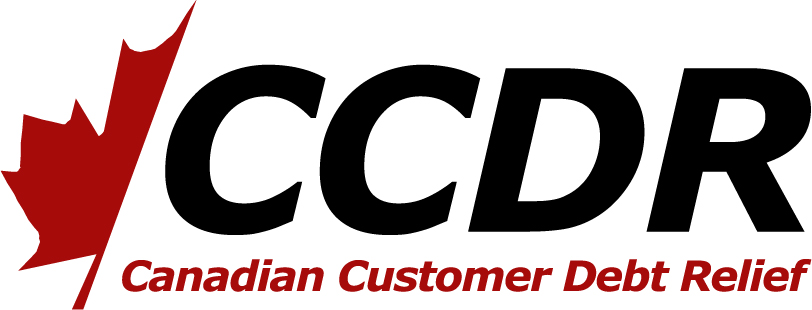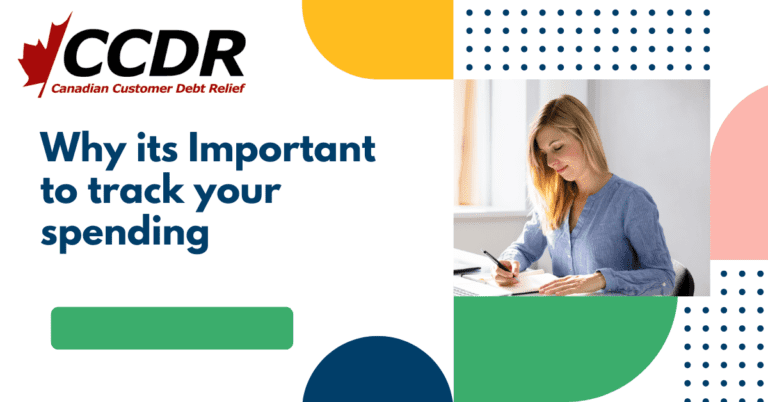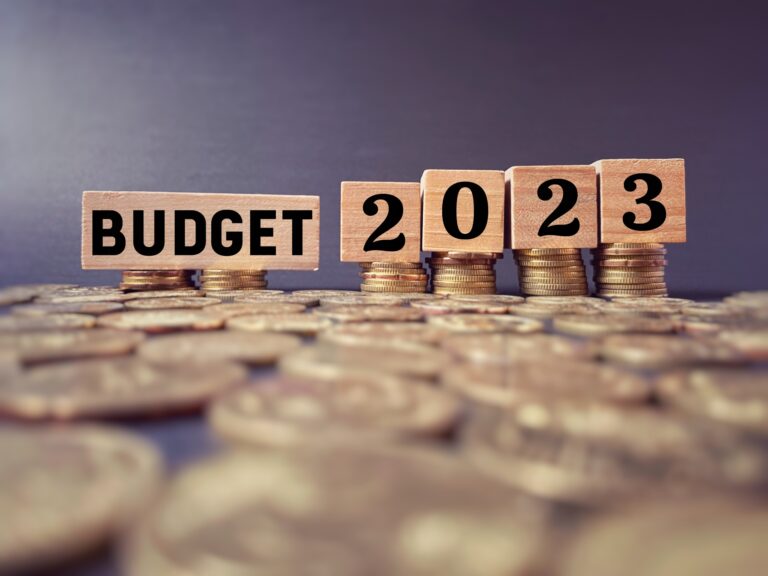Posts Tagged ‘Budgeting’
Why its important to track your spending
Tracking your spending is an essential step in taking control of your finances. It allows you to see where your money is going, identify areas where you may be overspending, and make adjustments to your budget accordingly.
One of the biggest benefits of tracking your spending is that it helps you to create and stick to a budget. When you know exactly where your money is going, you can make informed decisions about where to allocate funds and where to cut back. This can help you to save money and reach your financial goals more quickly.
Tracking your spending also allows you to identify areas where you may be overspending. For example, you may realize that you are spending too much on dining out or entertainment. Once you identify these areas, you can make changes to your spending habits and redirect that money to more important things like saving for retirement or paying off debt.
Additionally, tracking your spending can also help you to spot any suspicious activity on your bank account. If you notice any unauthorized charges, you can quickly report them to your bank or credit card issuer and take steps to protect your financial information.
Overall, tracking your spending is an essential step in managing your finances effectively. It allows you to create a budget, identify areas of overspending, and take control of your money. By keeping a close eye on your spending, you can make sure that your money is being used in the way that you want it to be, and reach your financial goals more quickly.
Its 2023 Time to Make a budget!
Creating a budget is an important step towards financial stability and security. By tracking your income and expenses, you can make sure that you are saving enough money and not overspending. Here are some steps to help you create a budget:
- Gather your financial information. This includes your income (e.g. salary, investments, etc.), expenses (e.g. rent, utilities, groceries, etc.), and debts (e.g. student loans, credit card balances, etc.).
- Calculate your net income. This is the amount of money you have left after deducting taxes and other deductions from your gross income.
- Make a list of your fixed expenses. These are expenses that remain the same each month, such as rent or a mortgage payment, car payment, and insurance premiums.
- Identify your variable expenses. These are expenses that can fluctuate from month to month, such as groceries, entertainment, and dining out.
- Determine your savings goals. This could include saving for a down payment on a house, building up an emergency fund, or saving for retirement.
- Compare your net income to your expenses. If your expenses are more than your income, you will need to find ways to cut back on your spending or increase your income. If you have money left over after paying your expenses, you can allocate it towards your savings goals.
- Create a budget plan. This can be as simple as a list of your expenses and how much you plan to spend on each one. Or, you can use a budgeting app or spreadsheet to track your spending and see how you are doing against your budget.
- Review and adjust your budget regularly. As your income and expenses change, it’s important to update your budget to reflect these changes. By reviewing your budget regularly, you can make sure that you are staying on track and making progress towards your financial goals.
Creating a budget takes some time and effort, but it is a valuable tool for managing your money and achieving your financial goals. By tracking your income and expenses and making informed decisions about how you spend your money, you can take control of your finances and build a solid foundation for your future.
Eliminating Debt to Create Generational Wealth
As we all know, debt can be a major burden on our lives. It can affect us physically and mentally, as well as financially. Debt is especially burdensome for those who carry it from one generation to another. In this article, we will discuss why generational debt is such an issue and how you can eliminate it from your life.
The Bigger Picture
Debt is bad—no, let’s be more specific: debt is not good. Debt is a burden on the future, and it places an even greater burden on the next generation.
A recent study found that millennials are delaying starting families because they’re afraid of taking on debt. The same study also revealed that nearly two-thirds of millennials are saving less than they’d like to because they’re worried about their debt levels. It’s no secret that when people struggle with paying off their student loans and credit cards, their lives become consumed by money issues. And this isn’t just damaging for millennials themselves—it’s also damaging for society at large.
The Real Costs of Debt
Before you can begin to eliminate debt, it’s important to identify what kind of debt you have and where it comes from. There are many different kinds of debt, including student loans, mortgages and credit card debt.
Each type of debt has its own characteristics that make it unique from the others. For example:
- Student loans typically don’t come with interest rates (although there are some exceptions) but require monthly payments until the balance is paid off in full—and usually for a long time after graduation (upwards of 20 years).
- Mortgages typically have low initial interest rates but often include balloon payments toward the end that increase interest costs significantly over time (sometimes as much as 50%!).
- Credit card balances should never exceed 30% or so of your annual income because if they do, then paying them off will likely take years—if not decades!
Why Don’t People Eliminate Debt?
Debt is a major issue among Canadians. In fact, the average household carries nearly $20,000 in credit card debt alone. Because of this, it’s important to understand the reasons why people get into debt and why they stay there.
First, debt is easy to get into. You can see it if you look at your monthly bank statement or go through your checkbook; however, most people don’t look at these things regularly because they don’t want to face their financial reality. Instead of seeing their money going out as quickly as it comes in (which should be alarming), most people act as though they have more money than they actually do—even though they really don’t! This leads us into our second point:
Second, staying out of debt isn’t always easy because society tells us that we need more than we have; thus, it becomes easier for us to spend than save our money for an uncertain future. Of course there are some benefits associated with having more stuff around us—we feel better about ourselves when we own nice things like a car or house—but these things aren’t necessary for happiness! What matters most is being fiscally responsible with one’s finances so that one can maintain peace of mind throughout life rather than worry about what tomorrow might bring due to lack thereof planning today…and then tomorrow arrives but nothing changes because it never does unless someone makes changes first!
How to Get Started
Getting started with your personal debt elimination plan can be as simple as recognizing why you’re in debt and what you want to achieve. If your goal is to get out of debt, then make sure that’s clear from the beginning.
Once you have a good idea about where you’re headed, it’s time to make a plan. You should have an end goal in mind—and ideally that goal will be “Pay off all my debts!” But how do you get there? Begin by looking at the big picture: What do your finances look like right now? How much money are you spending each month on bills and other expenses? Are there any recurring payments that could be reduced or eliminated altogether (like cable or car insurance)? What are your monthly income sources and how much do they add up per month after taxes are taken out (and assuming no additional income).
Next comes the fun part! Think of ways that money can flow into each category: Where do my savings come from right now? What about my credit card balance—how much does it cost me every month in interest payments alone? Can I put any extra funds toward paying off this balance faster than usual without sacrificing essential financial needs such as food and housing costs.
Start Small
The first step to eliminating debt is to start small. When you’re just starting, focus on paying off the smallest debt you have. This can be a credit card with a $500 balance, or it could be your student loans or mortgage—whatever is easiest for you to pay off. The more money that’s owed on an account, the better it will feel when it’s finally cleared out. Paying off your biggest debt will also give you significant savings in interest and time by putting all of those payments toward one debt instead of bouncing back and forth among several different ones. The more money saved from interest payments and applied toward each individual loan payment means more money available for investment once all debts are paid off!
How to Stay Motivated
The biggest challenge facing any debt-elimination effort is motivation. When you’re deeply in debt, it’s easy to get down on yourself and feel hopeless about the situation. But if you’re motivated enough, there are ways to stay on track.
Here are some strategies for staying motivated:
- Focus on the positive—the fact that you have a plan and are taking action toward your goal can be very motivating in itself!
- Make a plan, then stick to it—you’ll have more motivation if you know exactly what needs to be done next.
- Don’t let yourself get distracted by other things—if something comes up that will take away from your time spent working toward eliminating debt, put it off until later (or delegate). For example: if someone asks me out for dinner or drinks while I’m trying not too spend money on food or booze (because then I’d need even more money), I’ll usually say no because this would make my goal harder for myself
Start with a Plan and a Purpose
To begin your debt repayment journey, start by creating a plan.
- Create a budget and stick to it. Make sure you have an emergency fund in place so that if something unexpected comes up, you’ll have the funds to cover it.
- Create an actual list of priorities—not just for yourself but for your family as well. Some things on that list might include paying off student loans or mortgages, owning a home free and clear, having good insurance coverage in place, saving up enough money for retirement at age 65 (or whatever age is relevant to your situation), or being able to afford future educational expenses for your children or grandchildren.
- Once you’ve created these lists and goals, start working toward them! Write down how much money needs to come in each month and make sure the amount matches what needs are coming out each month—including any debts that need paying down. If there’s not enough coming in to cover everything needed each month with just income from one person’s paycheck then look at cutting expenses as we’ll touch more on later here; however this could also mean getting a second job temporarily until things get back on track financially again which isn’t always easy! But most important here though is not becoming discouraged when things aren’t going according exactly as planned because if anything happens along life’s journey then there will always be bumps along the road ahead but don’t lose hope because God has big plans ahead for those who believe through faith alone without works themselves first proving their faithfulness like Abraham did before us all today too!
Paying off debt is one of the best things you can do for your future, your family’s future, and your community’s future.
Eliminating debt is one of the best things you can do for your future, your family’s future, and your community’s future.
Debt can be a drag on your finances. If you carry a credit card balance or student loan debt then it will be difficult to save money – even if you make more than enough money to pay off what you owe each month. It doesn’t matter if someone else gave you the money (like an employer) or if it was earned through hard work (like from selling products); either way an individual must repay their debts without fail. This means that every dollar spent paying interest on loans will not be available for other expenses like food or clothing—let alone contributing towards retirement savings or starting an investment account!
If left untreated over time this problem can get worse too as interest rates continue to compound: The more time passes between when payments are made versus when they were first borrowed; then compounded again each month thereafter; compounded again with every new payment cycle until finally becoming unmanageable over time due to exponential growth due…
The bottom line is that debt isn’t just about you. It’s about the future of your family, your community and your generation. If we all take action to eliminate debt, we can build a better world for ourselves—and our children. It’s time to start paying off those bills!
Why it is Important to Avoid Debt
Debt is a necessary part of life. You need to borrow money in order to buy a house, start a business or go on vacation. However, it’s important that you avoid debt whenever possible. There are many reasons why you should avoid becoming too dependent on debt and some of them include:
Debt does not go away by itself
Debt is a long-term problem, and it won’t just go away.
It’s important to understand that debt doesn’t disappear on its own. There are many people who think they can just ignore their debt and it will eventually go away, but this isn’t true at all! The only way for your debt to truly disappear is if you take action. If you don’t take action, then your situation will continue to get worse until you start having problems with your finances and other areas of life as well.
Debt affects more than just your finances; it also affects your emotions.
Remember: Debt isn’t just a financial problem; it also has emotional consequences as well. As far as mental health goes, dealing with debt can be very stressful and exhausting—and sometimes even downright depressing! However if one approaches their situation with positivity instead of negativity (i.e., says something like “I’m going through a tough time right now but I know things will turn around soon”) then they’ll end up feeling much better about themselves by staying positive despite all odds stacked against them today or tomorrow…or whenever else they might encounter problems caused by someone else’s mistake (in this case being responsible enough not only pay off all debts owed but also never get into any kind of trouble again).
Debt can lead to bankruptcy and foreclosure.
While it may sound extreme, bankruptcy and foreclosure are a reality for many Canadians. Bankruptcy is a legal process that allows you to deal with debt, while foreclosure is the legal process of dealing with debt by selling your house to pay off any outstanding loans.
Regardless of the type of debt you have, both processes can be avoided if you are proactive in taking care of things before they get out of hand.
Debt carries hidden fees that you may not be aware of.
Hidden fees are charges that you didn’t know about at the time of signing. Hidden fees can be charged by lenders or credit card companies and can include interest rates, transaction fees, annual fees and late payment penalties. If you are not aware of these fees it may be difficult to budget for them or plan ways to avoid paying them in the future.
In addition to being a financial burden, debt can negatively affect your emotional well-being.
In addition to being a financial burden, debt can negatively affect your emotional well-being.
You may not realize that your finances are making you anxious, depressed or even suicidal until it’s too late. Be aware of the following signs:
- You feel like you’re drowning in debt. If this is how you feel, it may be time to seek help from someone who can assist you with gaining control over your finances once again.
- Your relationships are suffering because of money issues. For example, if you are unable to pay for necessities such as rent and utilities without asking friends or family members for help, it could lead them to resent having to take care of an adult who is “wasting money on frivolous things.”
Problems with debt can cause severe financial problems.
In addition to the obvious costs incurred from paying interest on a debt, there is a host of other problems that can arise from taking on debt. For example, having too much debt can affect your credit score and ability to get a loan. If you have too many loans or high balances on your accounts, it can make it difficult for lenders to determine whether or not they should trust you with a new loan or credit card. Even worse, if you have no money in savings and few assets besides whatever assets are already secured by mortgages or car loans (like a house or car), then there may be nothing available for lenders to take if they need to foreclose on their collateralized property.
In addition to potentially hurting your ability to purchase property or buy things like cars in the future (due to negative equity), taking out too much debt could also prevent people from buying those important things now due simply because they don’t have enough income left over after paying bills each month! This means that even though someone might really want something nice like an iPhone X but know full well that making payments every month will mean less money left over at month’s end so only having enough money after all bills are paid each month – then maybe buying one isn’t worth doing at this point because then where does one find funds for food/rent/etcetera?”
Avoiding debt is so important because it causes emotional pain and financial hardship.
So, why is it important to avoid debt? The answer is simple: debt can cause emotional pain and financial hardship.
When you are in a lot of debt, or when you have a high credit card balance, it can be stressful. You might become anxious about not being able to make ends meet each month and worry about where the money for your bills is going to come from.
This stress can lead to depression if it continues for too long. It’s also common for people who are struggling financially due to their debt problems not only feel stressed but also anxious and depressed as well as angry with themselves or others around them who caused them these problems like their spouse or close friends/family members who aren’t helping understand what they feel like when they see each other at work because they know how much money we owe every month which makes things worse because there’s nothing anyone else could do right now except let me know that everything’s going ok?”
Conclusion
We hope this article has helped you understand why it is important not to get into debt. If you are suffering from debt, we would like to encourage you to seek help from a financial advisor or credit counselor. They will be able to help you with your situation and make sure that your future finances stay on track!
Saving for Retirement in Canada
Saving for retirement is an incredibly important part of successfully planning for your future, especially if you live in Canada. There are a lot of options available, and they can help you build up the funds that will allow you to retire comfortably. In this blog post, we’ll go over some of these different options so that you know exactly how to get started saving for your golden years!
Saving for retirement is important no matter where you live in the world.
Saving for retirement is important no matter where you live in the world. If you don’t save, then you won’t have enough money to last until the end of your life.
Saving early is one of the best ways to ensure that you’ll have enough money in retirement to cover all of your expenses. The earlier you start saving, the more time it has to grow. This means that if you start saving at 25 years old, your savings will be able to grow faster than if you started at 35 or 45 years old. To help put this into perspective:
- If you save $500 per month from age 25 until 65 years old and earn an average annual return on investment (ROI) of 5%, then by age 65, this would translate into about $330,000! That’s a lot more than if someone starts saving only five years later at age 30 and then stops contributions altogether after retiring at age 65 (which is actually quite common).
- Alternatively, if someone started contributing just $50 per month starting at age 25 years old but stopped making contributions altogether once they retired at 65 – again assuming average investment returns over those 40 years – they’d still end up with only $28,000 in total savings by retirement day!
Many Canadians benefit from a workplace pension plan.
Many Canadians benefit from a workplace pension plan. In fact, about two-thirds of all Canadians have an employer-sponsored pension plan. This is one of the best ways to save for retirement because your contributions are matched by your employer, and some employers also offer additional contributions.
Workplace pensions are required to meet certain standards, such as offering lifetime income options and having enough money set aside to pay out benefits when they’re due.
The Canada Pension Plan (CPP) provides pension benefits to retirees.
The Canada Pension Plan (CPP) provides pension benefits to retirees. CPP is a mandatory pension plan for most workers in Canada. It covers nearly all employees and self-employed persons who work in Canada and make regular contributions, either through voluntary deductions from their pay or by paying directly into the plan. If you don’t contribute to the plan, you will not be eligible for CPP benefits when you retire.
CPP provides monthly benefits to eligible workers after they retire, become disabled or die. These benefits are based on your earnings history and how long you contributed to the plan.
The Old Age Security (OAS) provides another important source of retirement income for many retirees.
The Old Age Security (OAS) provides another important source of retirement income for many retirees. OAS is a monthly payment from the government that’s available to Canadian citizens who are 65 years or older and currently living in Canada.
If you live in Canada, you can apply for OAS regardless of whether you’ve ever worked in Canada or not. However, if you were born outside of Canada and became a Canadian citizen after age 18 (or 21 if born before 1947), the earliest date that your OAS could begin is July 1st of the year following your 60th birthday.
The good news about OAS is that it’s not taxable income! That means no matter how much money comes from your pension plan(s) or other investments, any amount received from OAS will be deducted from what is owed by the government at tax time—it won’t count against your taxable income at all! The bad news: while these payments are not considered taxable income by Revenue Canada, they’re still counted toward determining eligibility for other benefits like Employment Insurance and Guaranteed Income Supplement (GIS). This can have an impact on whether those sources will pay out enough money so as not to affect other benefits such as CPP disability insurance or provincial health care coverage premiums.
The Registered Retirement Savings Plan (RRSP) is an account that will help you save and invest for retirement.
The Registered Retirement Savings Plan (RRSP) is an account that will help you save and invest for retirement. Contributions are made with after-tax money and the amount of your contribution is deducted from your taxable income. The amount you contribute to your RRSP will be based on your eligibility, which depends on how much you earned in the previous year. For example, if you earned less than $46,605 in 2018 ($52,923 combined income if married or common law), then your maximum contribution is 18% of your net income up to $26,230 ($29,040 combined income if married or common law). However, these limits can vary depending on whether you have unused contributions room from previous years and provincial tax rates.
For each year that you make contributions before April 1st following any given tax year (e.g., 2019), there’s a grace period until December 31st during which time withdrawals aren’t taxable; however when withdrawing funds after this deadline without incurring penalties requires being over 71 years old or having financial need related to purchasing a home or paying medical expenses . You may also be able to transfer some of the investment earnings into an RRIF – Registered Retirement Income Fund at any time without penalty; however this option requires starting mandatory withdrawals within seven years after opening one up
Tax-Free Savings Account (TFSA) helps you save and invest without paying tax on your earnings.
The TFSA is a savings vehicle that lets you invest your money without paying any tax on your earnings. While it’s similar to an RRSP in that it’s meant for long-term saving and investment, there are a few major differences:
- You can use the TFSA for short term goals like saving for a car or house, as well as retirement.
- Unlike an RRSP, there are no age restrictions on when you can start contributing to your account (but if you withdraw money before age 65, it will count towards your income).
- You won’t be taxed when withdrawing from your account, but if you sell shares outside of the account they will be taxed as capital gains which means they may be subject to higher rates than normal income tax rates.*
There are a lot of options for saving for retirement in Canada and it’s important to take advantage of them!
There are a lot of options for saving for retirement in Canada, and it’s important to take advantage of them! For example, if you’re eligible, you can contribute to an RRSP (Registered Retirement Savings Plan), which is a tax-deferred savings plan where you get a tax refund on your contributions. You can also save in an RESP (Registered Education Savings Plan), which will help pay for post-secondary education. And there are many more kinds of plans available!
The Canada Revenue Agency has some great tools on their website that can help you figure out how much money you’ll need when the time comes to retire. They even have calculators that will tell you how much should be saved each month so that by the time retirement arrives, there will be enough saved up to last until death or old age!
Conclusion
Canada has many great retirement savings options for Canadians. It is important to take advantage of these options so that you can save up for your retirement years and enjoy them!
Using Cash Vs. Credit Why Cash is Still King!
Credit cards are a great way to build credit and earn rewards, but they can also be dangerous. A lot of people end up in serious debt because they don’t know how to use them properly. When you use cash you get immediate gratification and it’s easy to budget your money if you keep track of how much you have on hand at all times. With that being said, here are some reasons why cash is still king when it comes to budgeting your finances!
Automatically Budget
You can set up automatic savings and bill pay by using a budgeting app. The benefit of using cash for budgeting is that it forces you to actually spend your money. You have to make a conscious decision on how much money will be spent as opposed to having it come out of your bank account automatically. When using an app, you don’t have to remember what else has already been spent so there won’t be any surprises when paying bills at the end of month.
A great way to start is by tracking all your expenses for one month and then categorizing them into categories like food, entertainment, transportation and so on. You can then see where all the money went each week/month until you begin identifying patterns in spending habits that need changing or areas where more savings could be made (e.g., eating out less frequently). Once this step is complete, use the budgeting app’s built-in tools such as alerts and notifications about upcoming due dates; these features will help keep track of things like monthly bills without having another reminder floating around in your head (and thus making it easier not only save but also reduce stress levels).
Help you with your impulse buying habit
You can’t spend what you don’t have.
It’s a simple concept, but it’s also one of the most effective ways to help you manage your spending habits. When you’re left with only cash and no possibility of going back to the store or online shopping site and buying more stuff, then you’ll be forced to change some things about how much money is coming in and going out.
For example: If there were an emergency situation that required us all to use cash instead of credit cards (and let’s hope that never happens), we’d likely stop buying things like shoes that cost over $100 because we wouldn’t be able to afford them anymore if they weren’t included in our budget.
Another benefit from using cash instead of credit cards is less temptation when making purchases. Since there are no rewards points for using cash vs credit cards, consumers won’t be tempted by those kinds offers when deciding whether or not it’s worth paying interest rates on items bought with borrowed money versus paying full price for something without any type of discount at all!
Immediate gratification
Cash is the fastest way to get what you want. Whether it’s a drink at the bar, a new pair of shoes or even groceries for dinner, cash allows you to buy things immediately without waiting for approval from a credit card company. The only delay that might occur would be if there’s not enough money in your account; but with cash, this isn’t an issue because there’s no line of credit involved at all!
When using credit cards online or in person, you can see how much money is available on your card and make sure it matches up with what you plan on spending before making any purchases. This is not possible when using cash; however, this does have its advantages: Because there are fewer steps involved between deciding what to buy and actually purchasing it (i.e., touching some paper), we are more likely to spend more impulsively using credit cards than if we had chosen cash instead (which requires us to physically hand over some bills).
Helps you keep your spending in check
When you use cash, you’re forced to be more aware of how much money you have. When you use a credit card, there is no physical limit—you can spend as much as your balance allows.
Think about it: if you have $50 in your wallet and want to buy something for $10, what will happen? You probably won’t buy the item unless it’s something you really need or want. Why? Because when there’s only $40 left on your card, it feels like that remaining balance represents part of your paycheck that has already been spent. If we try to be frugal with our spending habits, this kind of mentality rubs off on us too!
However…if we make the same purchase with a credit card instead (which doesn’t necessarily mean using an actual plastic card) and realize there’s still plenty left over in our account after paying off our bill later in the month…it might feel like those extra dollars were ours all along—and therefore easily accessible for later purchases without having gone through any sort of mental “budgeting process.”
Conclusion
Cash is still king, and for good reason. There’s a reason why so many people are choosing to use cash instead of credit cards or even debit cards. Cash gives you an immediate sense of security from using it because there is nothing else that can be charged against your account other than what you have on hand at any given time. Also, using cash helps keep spending in check because it forces one to only spend what they have available at the moment which helps avoid impulse buying (or loss). Finally, cash allows one to build credit faster since banks like seeing payments made without any delays due to checks being cashed or funds transferred between accounts before payment can be made on time every month!
Back to School in Canada on a budget in 2023
The back-to-school season is upon us, and that means it’s time to stock up on all the supplies you’ll need for your kids to get back into the swing of things. But if you’re like me, that can mean spending hundreds of dollars on basic items like notebooks and pencils — all while living in an expensive city where rent keeps going up. So how do parents who want their kids to get a great education without breaking the bank manage? Here are some tips that might help:
Take inventory of your supplies
The first thing you will have to do is take inventory of your supplies. Do you have everything that is going to be necessary for the school year? Are there any items that you need to buy or borrow from someone else? If so, make a list of these things so that it’s easier for you and your family members when shopping for them.
Once this step is done, organize them in a way that makes sense for you. For example: if all of your pencils are in one place and all of your notebooks are in another place, then keep them separated by color as well (blue pencils with blue notebooks). This way they’ll be easier to find when needed! If some students prefer using pens over pencils, then let them use their own method but still keep track of which item belongs where by labeling each one accordingly (e.g., “This is my pen.”/”This belongs here”). Remember not only does organization make things easier but also helps prevent losing anything important like keys or electronics during class time!!
Make a list and budget
Now that you’ve got a general idea of how much money to expect and where to find it, it’s time to make a list and budget.
First, make a list of everything you need for school. These could include:
- Textbooks
- School supplies (like pencils, paper, binders)
- Lunch money or snacks
Look for deals and coupons
- Check newspapers and magazines. Many newspapers have a section of coupons, so you can look for them every week at your local grocery store.
- Check online coupon sites. Websites like Groupon and Living Social are great places to find deals on everything from restaurants to beauty treatments to school supplies. If there’s a deal for anything that you need for back-to-school, it’s probably on one of these sites!
- Look for coupons on social media. It’s pretty common nowadays for companies to offer coupons through their social media channels—so if you see any companies that sell the types of things in which you’re interested (e., pens or notebooks), make sure to follow them so that they can keep you up-to-date with new offers as they come up!
- Look in store flyers: Many stores will send out flyers with all sorts of special offers in them! Keep an eye out for any sales or discounts that might be available during back-to-school season at stores like Staples and Walmart; often times these stores will have big sales right around August when kids start school again after summer vacation ends (this also works great since most schools start around September/October).
Conclusion
We hope that you have found our tips on back to school in Canada on a budget useful. While it can be expensive, there are plenty of ways to save money and still find everything you need for school. You just have to know where to look!
To Give or Not to Give … Allowance to you kids?
For parents, there are two schools of thought about giving an allowance to their kids. One school of thought says that it’s important for your child to learn about money and how to budget it. The other school says that you should not tie your children’s allowance to chores or any other incentives because it will only lead to them being spoiled and entitled. So what should you do?
There are 2 schools of thought on allowance. One that says you should, and the other that says you shouldn’t give an allowance.
There is a really good reason why you should teach your children about money, responsibility and how to manage it effectively. Here’s why:
- Allowance teaches kids how to save money for things they want or need in life and the value of their time. They learn that there are things they want but can’t get right now because they don’t have enough money saved up yet (or don’t have a job), so they need to wait until they can afford them. For example, if they want a new phone when they already have one that still works just fine…they’ll know not just how much it costs but also how long it will take them to save up enough money for it by doing extra chores around home or getting an after-school job during high school years so that when college starts all those years later–they’ve got plenty saved up!
- They also learn about delayed gratification–the ability not only appreciate something more after waiting patiently for what seems like forever but also being able to enjoy some experiences without needing instant gratification like eating junk food whenever hungry rather than waiting until mealtime comes around again tomorrow at noon.”
If you give an allowance, what’s the right amount to give? And how often?
The first thing to consider when deciding whether or not to give your children an allowance is how much they need. An allowance should cover the basic necessities of life, but it shouldn’t be so little that your child goes without food and clothing, or so much that your kiddo becomes spoiled by too many treats.
This amount can vary depending on each family’s financial situation and what role parents want their kids to take in the household (preparing meals, helping with chores etc.). As a general rule of thumb, parents should make sure that their children have enough spending power for events such as birthdays and holidays — and if you have multiple kids who are receiving allowances from you at once (for instance), then make sure that each child has enough money set aside for him or herself. The rest can go toward saving up for larger purchases like cars down payments!
So what criteria should be used to determine if your child is mature enough to be given an allowance?
So what criteria should be used to determine if your child is mature enough to be given an allowance?
- The first thing you must do is decide on the age at which your child will receive his or her first allowance. While there’s no magic number here, it should probably fall between the ages of 8 and 10.
- Next, you must consider how well your child understands the concept of money. Does he/she understand that money comes from working for someone else in exchange for goods or services? Does he/she understand that earning an income takes work and sacrifice? If not, then it’s not yet time for them to receive an allowance as they won’t have any idea of what spending it would mean either way!
How can you teach your kids about money through an allowance?
One of the downsides of giving your kids an allowance is that they’re often only handed the money when they need something. If you want to teach them about spending and saving, you can give them a small amount of cash, let them decide how they want to spend it, and then see what happens. Some parents prefer giving their child a set amount at certain times during the week or month (like a weekly allowance). This way, parents don’t have to worry about remembering when their child needs money for something specific; if there’s no emergency situation going on in their lives at the time, then there won’t be any need for an extra handout.
This method also allows parents to teach kids about saving and investing—and even how credit cards work! It’s important for children understand these concepts early on so that when they get older (and hopefully more financially responsible), they’ll know what their options are when it comes time make financial decisions on their own.
Finally: teaching our kids about college savings through an allowance may seem like a daunting task but with some guidance from us adults we can open up new avenues where both parties benefit!
What about chores? How does that relate to allowance?
Chores are an important part of growing up. They teach responsibility, they teach kids about the value of work, and they teach kids how to use money wisely. Chores also help them learn how valuable time is — if you think back to when you were a kid, didn’t you have some chores that took time? Your parents had a certain number of hours per day that they worked (regardless of whether or not it was for pay), and so did your siblings. The same goes for your friends: Their parents probably had set hours at their jobs too! Everyone has responsibilities; everyone has expectations; everyone has things that need doing in order to keep living comfortably as well as possible. And all these things tie into earning an allowance because…
What role does money play in making kids more spoiled? Does money spoil kids?
Money is a powerful tool that can be used for good or bad. As a parent, it’s important to be aware of how you’re interacting with your children and their money.
Money can teach kids about earning, saving and spending. It can also teach them about work and effort—that it takes time and hard work to earn money that you can spend on things like school supplies or fun activities with friends or family members. A job isn’t always fun but sometimes we have to do things we don’t like in order to get what we want — in this case, money!
A little bit goes a long way when it comes to teaching kids these lessons through allowance as well: if they save up enough allowance before asking for something expensive instead of just buying what they want right away without thinking twice about it, then I think that’s great! But if they don’t save up first because there aren’t any consequences (such as “no allowance” if not), then there isn’t much incentive for them not to buy whatever they want whenever they want regardless of whether or not they really need/want those items at all times throughout life… which could lead down an extremely slippery slope when I look back at my own childhood experiences growing up during The Great Recession (2008-2009).
So is it a good idea to tie their allowance in some way to their chores then?
So is it a good idea to tie their allowance in some way to their chores then?
The answer lies in whether or not you can be trusted to do the right thing and follow through on the reward/punishment so that it really becomes a teaching tool. If you’re not sure, there are other ways they can learn responsibility without losing money. They could do volunteer work at school, or chores around the house like cleaning up after themselves when they’re done with homework. This will teach them valuable work habits while giving them an opportunity to earn extra cash along with it!
Acknowledge your child’s efforts with a reward, but don’t give them something more than what they’ve earned.
Giving your child an allowance is a great way to teach them how to work hard, be disciplined and save their money. But don’t give your child more than he or she has earned. Acknowledging your child’s efforts with a reward, but not more than what he or she has earned, teaches the value of hard work and persistence.
It’s important for parents to remember that rewarding effort will help your child learn how to work hard, regardless of outcome. For example, if you are playing basketball with your son and he scores five baskets in a row – even though his shots were falling short – it would be unfair for you to say: “Okay! You deserve $10!” He didn’t do anything extra except make a few shots in succession so there was no reason why you should have rewarded him monetarily; giving him extra money would only serve as an incentive for him not try harder in future games because he knows there will be an automatic payoff at the end of each game no matter what happens out on court.
Conclusion
With all the ways to earn money, and so many temptations for kids to spend it on junk, it’s hard to know where to start. But if you just set up a simple system from the beginning and stick with it, then you’ll be able to teach your children good habits while they learn how much of a difference money can make in their lives.
Renting VS Mortgage in Canada
Renting or buying a house? It’s a crucial decision that can feel like a big one. If you’re trying to decide, here are some things to consider:
In Canada, renting a home or buying a home is an essential part of life. But, what’s the right choice for you?
If you want to rent:
- You can rent for shorter periods of time. Renting gives you flexibility to move around and try out different neighborhoods and living situations. If your job situation changes or if you just feel like moving, it’s easy to give notice on your lease and find another place to live in no time at all.*
Pros of Renting
You don’t have to worry about repairs.
You can move when you want, and where you want. No more being stuck in an apartment because your landlord doesn’t want to do the work or is pushing for a sale.
Your rent payments are predictable, as long as you live within your means and don’t overspend on other things that might impact your ability to pay rent on time every month. You’ll never have unexpected expenses like a leaky roof or broken furnace that would force you into taking out a loan against your home—or worse yet, losing it altogether!
If circumstances change in your life and make renting less desirable than buying (like having kids), then there’s nothing stopping you from moving out of an apartment complex and into a house or condo somewhere else within minutes (depending on whether pets need vet care).
Cons of Renting
Renting has many advantages, but you may be wondering if the cons of renting are worth it. If you’ve been thinking about buying a home instead of renting, there are some factors to consider before making this decision.
Pros of Renting:
- You don’t have to pay for repairs or maintenance. If your toilet breaks or the roof is leaking, your landlord will deal with it for you as part of your monthly rent payment.
- You’re not responsible for landscaping costs or snow removal; these are all covered by the landlord as well!
Cons of Renting:
- There’s no guarantee that you’ll like where you end up living (unless it’s a condo). Since most landlords own multiple properties in various locations across Canada – they aren’t concerned with what kind of decorating style suits their tenant best – just how much money they can make off them every month! So if a new house down the street catches everyone’s eye but yours doesn’t match its aesthetics? Tough luck! Unless there isn’t anything else available nearby…then maybe just maybe…but probably not…
Pros of Mortgage
- Mortgage is a loan
- Mortgage is an investment
- Mortgage is a long term commitment
- Mortgage is a good way to build equity
- Mortgage is a good way to build your credit score
Cons Of Mortgage
- Mortgage is a long-term commitment.
- You need to be financially stable and comfortable with taking on the responsibility of paying off your mortgage for the next 20 years or so.
- You must have good credit score and be able to provide a down payment of at least 10%.
Which is the Best option?
While it’s true that renting is cheaper than buying a home, there are other factors to consider when deciding whether or not to rent or buy a home. These include your financial situation, lifestyle preferences, and long-term goals.
If you’re single and have no plans for starting a family in the next few years then renting may be your best option since it’s usually cheaper than buying a home. Plus, if you spend most of your time at work then having the flexibility to move around as needed would make renting more appealing over owning a property where you’d be stuck with one place for many years (or even decades).
However, if you want to raise children with access to great schools in their area without paying private school tuition prices then buying would likely be better since there are so many different types of properties available at different price points depending on how much house space/land size they offer compared against what type of amenities exist nearby such as shops/restaurants within walking distance along with parks nearby too which provide free activities all year round including skating rinks during winter months too!
You can motivate yourself without being mean to yourself.
It’s time to start thinking about moving out of your parents’ house, or maybe you already have and now you’re looking for ways to save money. One big way to do that is by renting a place instead of buying a home. The idea has been around for decades but recently it’s become more popular as people realize they can motivate themselves without being mean to themselves.
Renting vs mortgage in Canada is a choice every Canadian needs to make when they want to move out on their own or when they want an extra room in the house (or two).
Conclusion
At the end of the day, it’s your money, so you can decide what works for you. But if you’re still not sure about buying or renting a home in Canada, consider these pros and cons. Weighing both options will help you make an informed decision about what’s best for your future!
How Much Money do you need for retirement in Canada?
Retirement is something that few people think about in their 20s and 30s and a large segment of the population around 50 isn’t really sure what they need to do to fund their retirement years. While there are many variables that come into play, one way is to figure out approximately how much money you will need in retirement. A good rule of thumb is this: in today’s dollars, you will need a minimum $1 million dollars to comfortably retire in Canada. To get to $1 million at retirement, assuming you make $50,000 per year, you should try to save at least 15% per year (if you start in your early 20s); if you start later, say in your 30s, try saving closer to 20%. If it’s still early enough for you (say under 40), then saving closer to 25-30% per year would be better!
Retirement is something that few people think about in their 20s and 30s and a large segment of the population around 50 isn’t really sure what they need to do to fund their retirement years.
It’s important to remember that retirement is a long way off for most people. At this point in your life, you’re probably thinking about getting through the next day, let alone planning for retirement. But if it’s not on your radar yet, it will be soon. You’ll find yourself thinking about saving money with every paycheck or maybe even setting up an automatic transfer from your checking account into a savings account when each paycheck hits.
The earlier you start saving money for your future self (retirement), the more time it has to grow and compound into something significant by the time you retire. If you wait until later in life to start saving for retirement without any previous contributions, then expect to have less money at that time—which means fewer options available to help fund those years when they come around! So while there aren’t any hard deadlines or cutoff dates where once passed there’s no going back (unless we’re talking about investing in crypto-currencies here), there are definitely advantages if done sooner rather than later.
While there are many variables that come into play, one way is to figure out approximately how much money you will need in retirement.
While there are many variables that come into play, one way is to figure out approximately how much money you will need in retirement.
In order to determine this, you will need to know what your living expenses will be once you stop working full-time. This includes housing costs and utility bills as well as any medical expenses that may arise. You should also consider transportation costs if you plan on continuing with a car payment or other regular expenses such as insurance premiums or memberships for sports clubs or gyms (if applicable).
Once you have an idea of how much money is necessary for each month in retirement, multiply it by the number of months per year (12) and then divide by 12 again to get an annual amount needed per month:
A good rule of thumb is this: in today’s dollars, you will need a minimum $1 million dollars to comfortably retire in Canada.
The rule of thumb is to save 15-20% of your income. The more you can save, the less likely you will need to worry about how much money do I need for retirement in Canada. If you are saving this amount every month, even if it’s small, then it adds up over time. You should also think about investing that money in ways that will grow and eventually make enough interest so that you can live off of the investment alone.
If we follow those steps and invest properly, then a good rule of thumb is this: in today’s dollars, you will need a minimum $1 million dollars to comfortably retire in Canada (and maybe even more depending on where).
To get to $1 million at retirement, assuming you make $50,000 per year, you should try to save at least 15% per year (if you start in your early 20s); if you start later, say in your 30s, try saving closer to 20%.
To get to $1 million at retirement, assuming you make $50,000 per year, you should try to save at least 15% per year (if you start in your early 20s); if you start later, say in your 30s, try saving closer to 20%.
For example: If a person is saving 15% of their income for the next 40 years and earns a 5% annual return on their investments (after fees), they’ll be able easily reach their goal. If that same person were only earning 2% instead of 5%, they would have to save as much as 22%.
Now let’s say that after 50 years of work and saving up an average of just over $1 million dollars (which is not unreasonable given how high house prices can be), we want our money invested so that it will grow over time while providing some income each month.
If you are entering your 40s with just a few thousand in savings, don’t worry too much – it’s better late than never! You can still save 15-20% of your paycheque each year and after 10 years, it will add up very nicely!
If you are entering your 40s with just a few thousand in savings, don’t worry too much – it’s better late than never! You can still save 15-20% of your paycheque each year and after 10 years, it will add up very nicely!
In fact, if you have been making steady contributions to your RRSP over the past 10 years (and have not withdrawn any money), then I would bet that you have more than enough assets to retire tomorrow. Let’s say that at age 45, your assets total $200k in stocks and bonds. Assuming an annual return of 5%, this would grow to $638k by age 55. If we assume that all these funds are invested conservatively (as opposed to taking on more risk) then at age 55 this portfolio could generate income of 8% per year ($52k). This means that even though our hypothetical investor has saved only $200k over the past decade (and did not take any withdrawals from their RRSPs), they could now retire comfortably at 55 without ever having contributed another cent!
Conclusion
After looking at the numbers and how much money you need for retirement, it is clear that if you want to retire comfortably, then you need to start planning early in life. A good rule of thumb is this: in today’s dollars, you will need a minimum $1 million dollars to comfortably retire in Canada. To get there at retirement age (average 65 years old), assuming your income doubles each year due to inflation, then it will take 10 years to save up enough money if you start saving 15% per year; if starting later than 30 years old then 20% per year would be necessary. If entering into your 40s with just a few thousand dollars saved up – don’t worry too much! You can still save 15-20% of your paycheque each year and after 10 years it adds up very nicely!










